Having a backyard flock of chickens means you get fresh eggs. They require little care; only freshwater, good food, a safe place to roost and to lay eggs.
Unfortunately for most chicken owners, keeping chickens were they belong isn’t always easy.
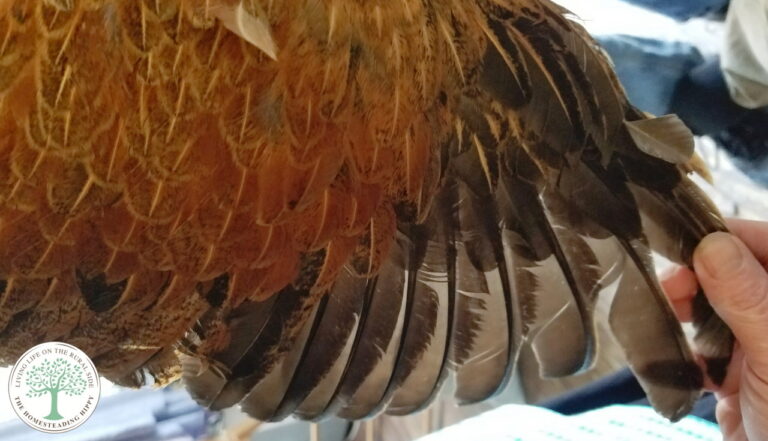
Chickens are not always up on the rules of the fence or other borders, and are naturally curious animals. Flying over the fence can seem like a good idea to them.
When chickens have all their feathers, they can actually take flight. Literally flying the coop! Well, in a manner of speaking.
They are able to fly enough that their flight lasts about 20-30 feet, up to 10 feet off the ground. It’s not very far, but it’s enough to get over a 6 foot fence and into the garden, or a neighbor’s yard. This can cause very unwanted damage.
One way you can help this is by clipping chicken wings on one side. Clipping a bird’s wings does not mutilate their actual wings, it just trims the feathers so they can’t create enough lift.
Chicken wings have different feathers, from the longest primary wing feathers going down to secondary wing feathers and so on.
Strategically shortening the primary wing feathers eliminates their ability to fly, and you don’t even have to trim them all to do so:
Chickens with clipped wings on one side are unable to balance properly to get off the ground. They will flap plenty, but won’t get high or far!
Done right, this will not hurt them. As a matter of fact, it’s similar to when you trim your hair. Unless you go too far down the wing, there will be no pain or loss of blood, even for a fully grown hen.
When To Start Clipping Their Wings?
You can begin clipping chicken’s wings at anytime, but it’s usually best to do it before they become a problem. This means that it would be best to clip a non flying pullet (under 6 months of age) before she begins to try and fly over that fence.
They will adapt faster the younger they are. This is much like an adult who loses a limb and has to go on with daily life over a child who loses it earlier in life.
The adult has more to “muscle memory” to overcome and adapt than the child will have.
Consider the Chicken Breed
Before you resort to clipping the flock’s wings, consider the breed. More heavier breeds, like Jersey Giants, or Buff Orpingtons may not need their wings clipped at all. They would be too heavy to get off the ground and over that fence.
Smaller breeds, like Leghorns or bantam breeds that are much lighter in weight will be your ideal candidates. Any who repeatedly escape, regardless of the breed will also be a likely candidate for clipping.
Tools and Materials
First, you want to gather your materials:
- Sharp pair of scissors
- Side-cut Nail Clippers or Nippers (as an alternate to scissors, either will work)
- Towel (to help hold the bird securely)
- Gloves (for large or belligerent birds)
- Gauze pad (to help control bleeding)
- Styptic powder (coagulant agent that rapidly stops bleeding in case of a nick)
- Cornstarch or Flour (if you don’t have styptic powder, also helps stop bleeding)
Steps to Safely Clipping Chicken Wings
Step 1. Secure and invert chicken
Once you have your bird, gently invert it for a moment to help calm it down. Hold it securely under your arm, keeping the feet and beaks away from you.
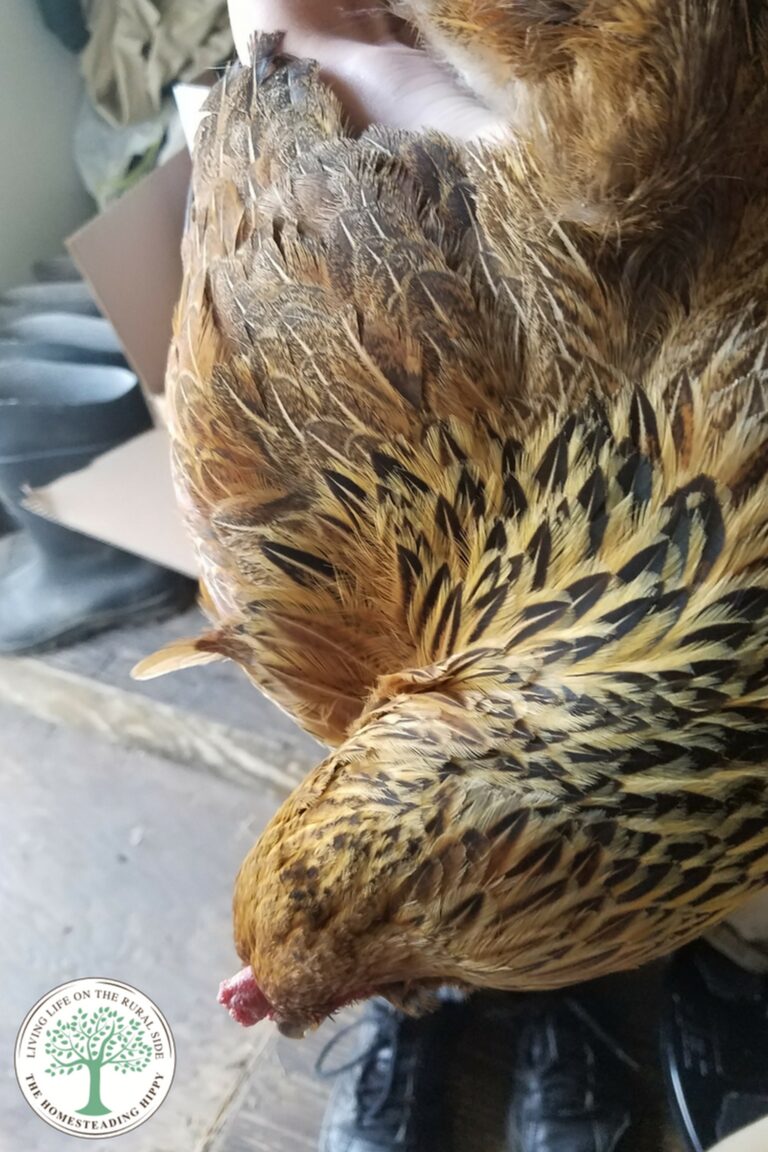
Sometimes, carefully wrapping them in an old towel can keep you from getting scratched. This may also keep the bird more calm while you are clipping.
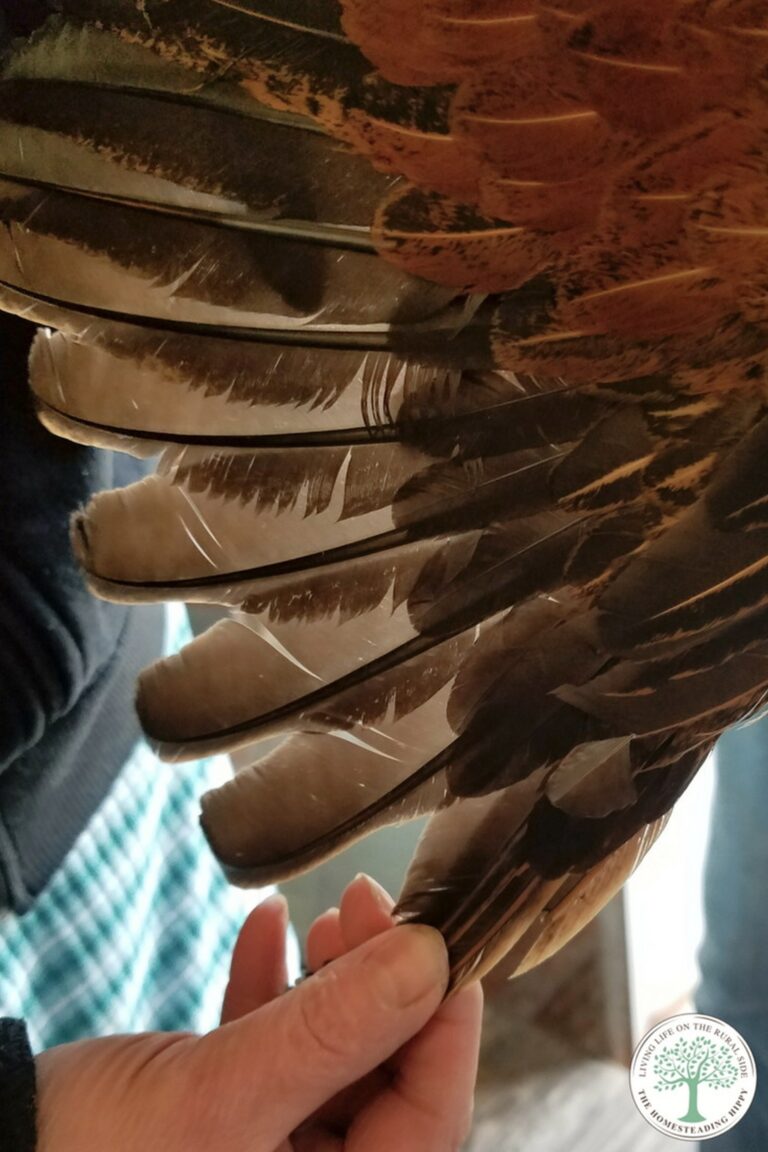
Step2. Expose the feathers on one wing
We choose the right side of all our birds so that we can easily identify which bird has already been done.
Either side of the bird is fine, just choose one side or the other for your flock. Gently pull the wing out and extended it to identify the primary feathers.
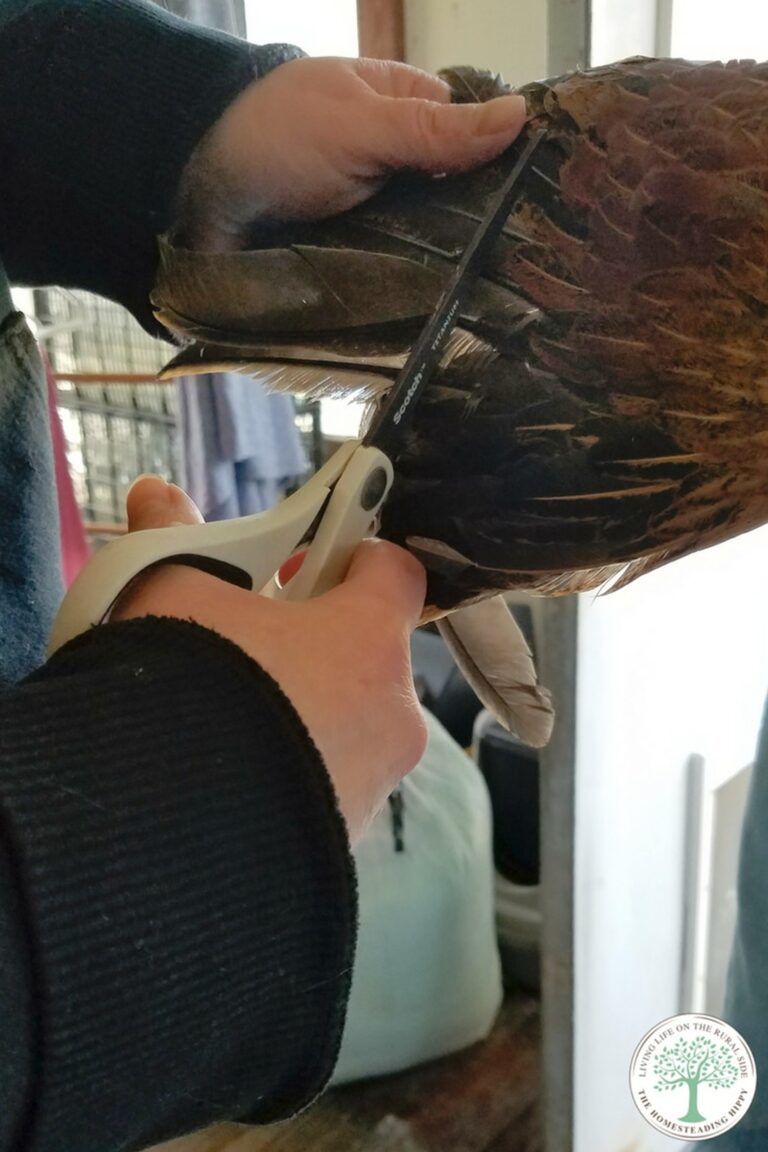
Step 3. Snip feathers
Next, carefully clip the wings with the sharp scissors. Only clip the primary flight feathers, down to where the secondary feathers start.
Make sure to clip the wings only. You do not want to cut into any bone or blood vessel.
Take your time doing this to avoid injury on the bird. Clip the feathers, one at a time, down the entire wing until all the flight feathers are clipped.
You will be cutting approximately 10 primary flight feathers. At first, it may seem daunting, but will practice, you will be much more secure in this.
Step 4. Release
Hold the bird a moment to calm down, then gently release back into the pen.
Continue with all the birds, keeping the same side clipped as you go. This will only last until their next moult, at which time the feathers grow back.
Most chickens at that time will not try and fly again and give up. However, if you have a particularly stubborn hen, you may need to repeat this process each time to keep them safe.
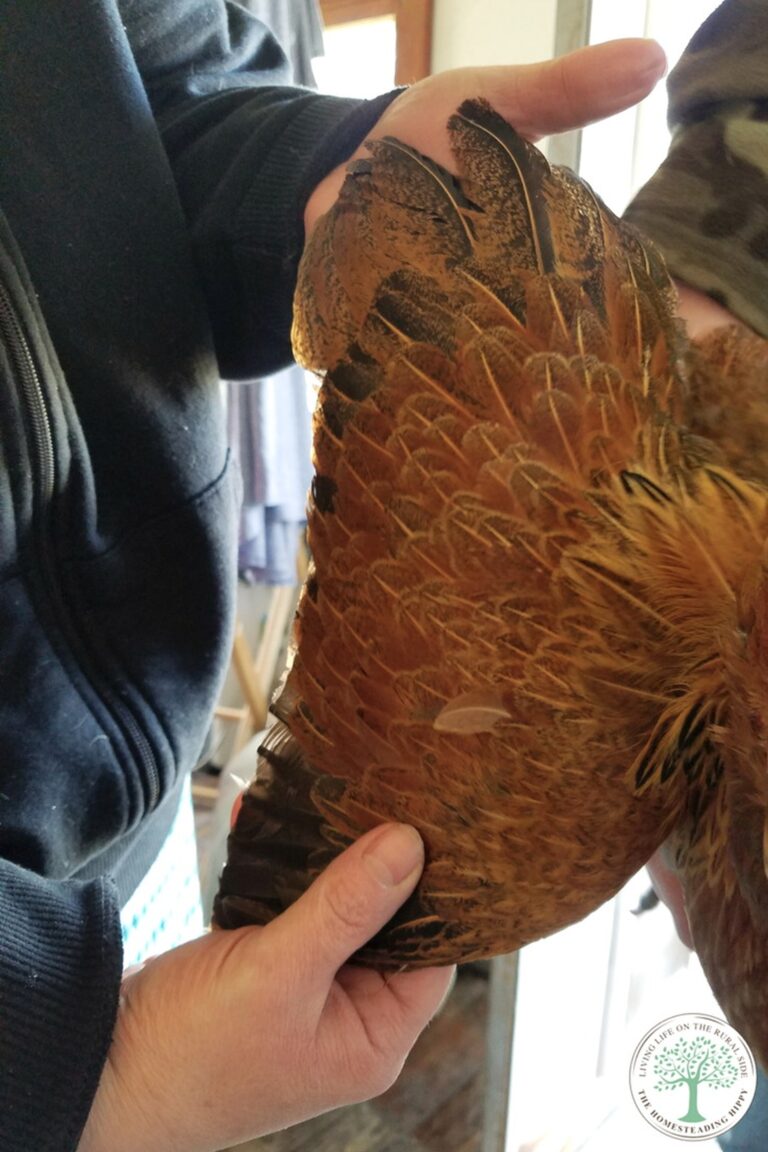
Stopping Bleeding from an Accidental Cut
If you should happen to accidentally go too far on the chicken’s wing feathers and draw blood, sprinkle a bit of cornstarch on the cut and apply gentle pressure to stop the bleeding.
Another option to help stop bleeding is to apply yarrow on the bird’s wing area. Use yarrow either fresh from the garden, or dried in a poultice on the gauze pad.
Don’t worry about excessive blood supply loss if you clip just a little bit. Stop the bleeding as quickly as you can, and keep an eye on the bird for a couple hours to make sure they are okay.
Watch for signs of lethargy, or not eating. More often than not, the bird will be just fine.
Frequently Asked Questions about Wing Clipping
No, clipping a chicken’s wings does not hurt them if it is performed correctly. Done so, it is a quick and painless process that just takes a few seconds.
Once their wings are clipped, chickens can no longer fly and will remain grounded. However, it is possible to botch the job (especially with an unruly chicken or a nervous, shaky hand) and cut too far down on the primary feathers.
This may cause pain and some bleeding. The worse outcome would be to accidentally cut the wing itself, which could severely injure the chicken. This is unlikely so long as you are diligent!
You should clip a chicken’s wings a little while after their have their adult feathers and they stop growing out.
Their feathers will come in properly around 11-14 weeks of age, and will be fully fledged and ready to clip between 18 and 23 weeks.
At this age, the feathers won’t have any blood in their shafts and will be ready for clipping with no fuss and no muss.
It is possible to clip the feather earlier, but you’ll want to check with your veterinarian first as there is a small risk of causing developmental problems.
Yes, you should generally clip both wings on a chicken, though you can often clip one to ground them.
Clipping both wings will ensure that they can’t fly and will be less likely to injure themselves in case of imbalance on liftoff. It also helps to keep them from getting too far away in the even they can make a long “hop.”
You can always start with clipping one and see how your bird does, then come back and clip the other if you decide to.
This varies somewhat depending on the chicken, but they can typically only get a few feet off of the ground, two perhaps three feet vertically. This is generally not enough to allow them to escape a predator or get over most fences.
Even if it will allow them to clear a short fence it is still important to not to clip their wings back too short as this could lead to injuries.
Okay, just to be really clear, we aren’t cutting off their wings here! We are just clipping the feathers. Clipping wings is just an expression for the process. The chicken’s actual wing will not grow back if it is cut off, but the feathers will!
Depending on how much you clip off, it could take a few weeks or a few molts for the feathers to fully regrow. If you only clip a small portion of the feathers, they may regrow in as little as a month or two.
No, and there is no need to. Baby chickens cannot fly so there is no need to clip their wings.
They are covered with a fuzzy down that does not provide lift even if they were strong enough to fly at that age. If you wait until they are ready to be clipped, as we discussed above, then there will be no problem.
Clip their Wings and Keep them Grounded
Clipping feathers on your flock may seem cruel to some, but free range chickens CAN and do get into a lot of trouble. This will help keep them safer in their designated area.
Do you practice clipping chicken wings? Why or why not? Be sure to share in the comments what you do!
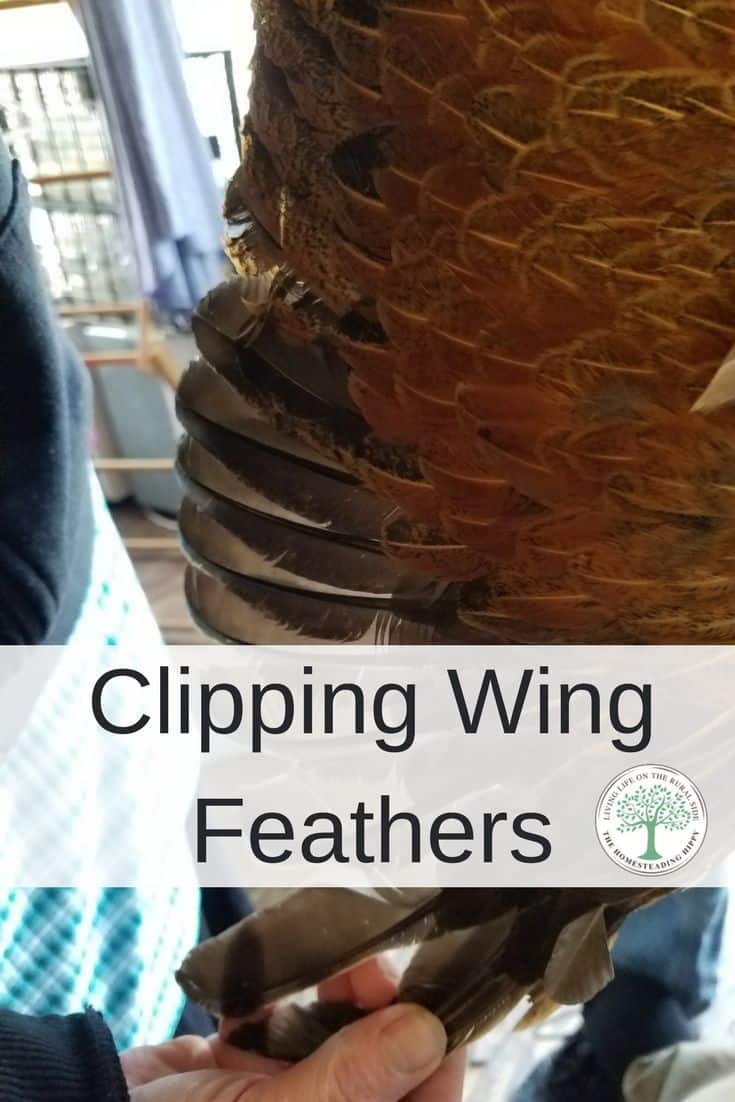
last update: August 3rd 2022
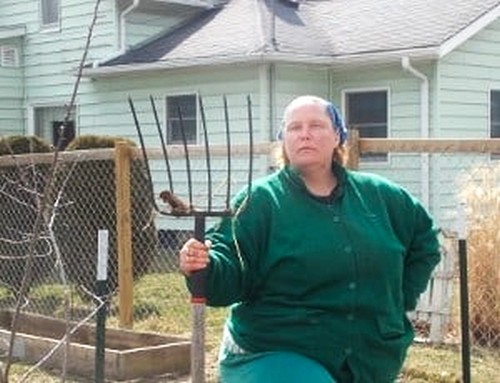
Heather’s homesteading journey started in 2006, with baby steps: first, she got a few raised beds, some chickens, and rabbits. Over the years, she amassed a wealth of homesteading knowledge, knowledge that you can find in the articles of this blog.
Learn more about Heather and the rest of the writers on this page.

I’m in such a quandary over this. I have to feral chicks who are just over two week of age, maybe pushing 3. I like that they are hardy, foraging and predator saavy, but they are too young to be flying out of where I have them (walled in porch during the day, in the tub at night), and building something fully contained doesn’t make sense for us and this situation. But just this morning, one of them flew from my feet straight up and was aiming to land on my head. She would have made it if I hadn’t stepped and swatted her away. So we’re talking a chick able to fly 6′ straight up. They are also able to fly over t10 feet horizontally at at least 12″ off the ground, probably more like 24″. If I clip them now, will they be able to protect themselves well as free ranging birds in a couple of months? I could potentially – if I move really fast!- contain them to a much smaller outdoor area, but this is not a type that tolerates confinement. Ugh. Dilemma.
No, do not clip if you are not able to provide a predator proof roosting area.